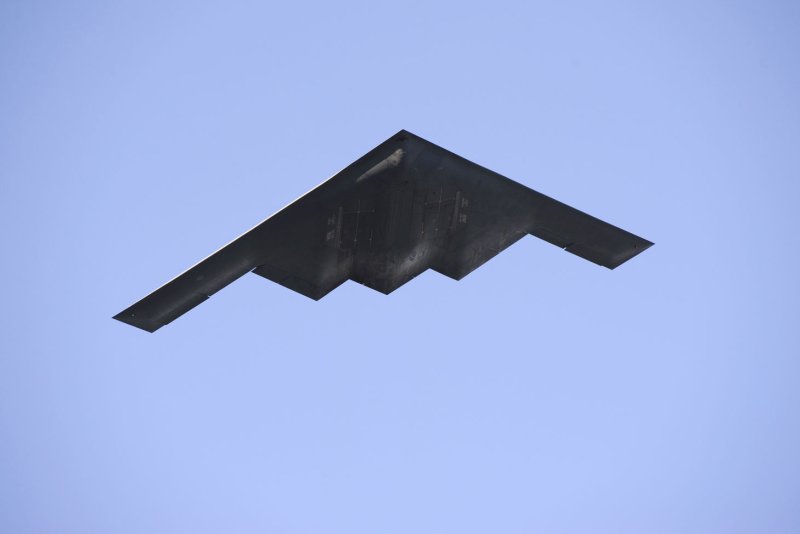A U.S. Air Force B-2 stealth bomber flies over the parade route during the 123rd Tournament of Roses Parade in Pasadena, Calif., in 2012. File Photo by Phil McCarten/UPI |
License Photo
ORLANDO, Fla., Feb. 12 (UPI) -- Air Force brass came out in force at the annual Air Warfare Symposium and Technology Exposition to promote the necessity of new big-ticket programs for the 2016 budget cycle.
Leading the discussion was the Long-Range Strike Bomber, described as the "foundation" of how airmen will innovate in the future, even in peacetime employment.
To answer the question, "Why do we need the LRS-B?" Ret. Lt. Gen. Robert Elder said "long-range strike is a superpower capability, and stealth is now the price of admission."
He added, however, that "we cannot conceive [the LRS-B] to be the Death Star," but a multitude of systems.
Ret. Col. Mark Gunzinger, said "revisionist states" (Russia, China, North Korea) are gaining capabilities that prevent the United States from "projecting power effectively." Further, Russia and China are just plain large, and the fleet is lacking the necessary "strategic depth."
Defense analyst Rebecca Grant said the U.S. bomber fleet is "noble" but not enough for the future, noting we are "down to our last B-2s."
On the topic of whether the LRS-B could be unmanned, Elder replied, "Yes, but why?" Explaining further, he said different mission requirements could merit the construction of both manned and unmanned LRS-Bs.
Northrop Grumman and a joint partnership between Lockheed Martin and Boeing are in the running for the coveted $55 billion LRS-B contract, set to be announced this spring.
On the topic of stealth, for the two sixth-generation X-planes proposed under the so-called Aerospace Innovation Initiative, there is a clear disconnect between the Navy and the Air Force, working together with DARPA on the new fighters. While the Navy has suggested stealth is overrated in a fighter, the Air Force disagrees.
Outfitting the LSR-B and future fighters with advanced ISR (intelligence, surveillance, reconnaissance) capabilities, including next-generation sensors and directed energy weapons is a must, according to Air Force Chief of Staff Gen. Mark A. Welsh, who said the technology gap between older F-16s and F-22s and the state of the art is too great.
Welsh praised Curtis Lemay for building a force based on "innovative" strategic bombardment after WWII, noting the tactic is still useful against the likes of the Islamic State. But the word of the day was deterrence, particularly in reference to Russia and China.
It's unclear, however, whether traditional 20th century ideas of deterrence are truly in play today, as Russian President Vladimir Putin takes action in Ukraine and China presses its neighbors in the South and East China seas.
Almost all the Air Force generals who took the stage exhorted those in attendance, both from military and the defense industry, to communicate the needs of the Air Force to regular Americans who "don't get it."















